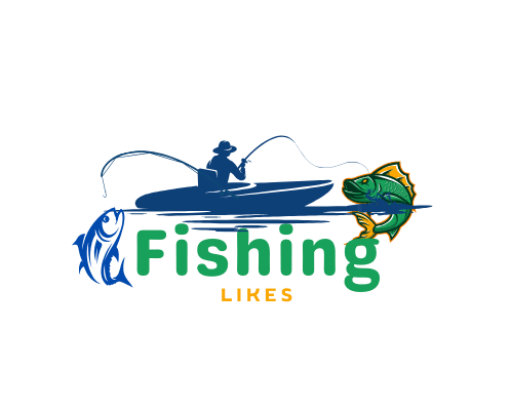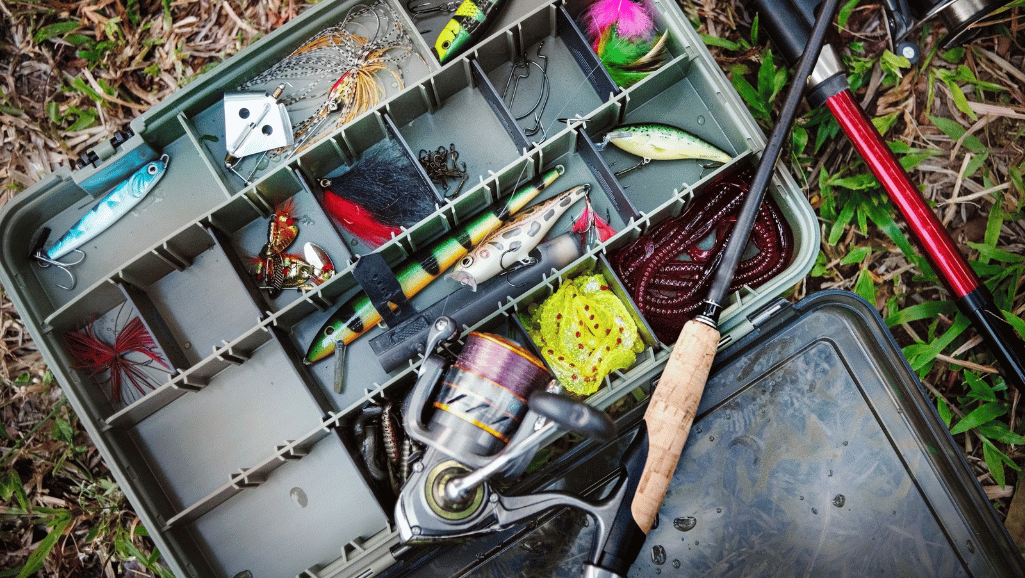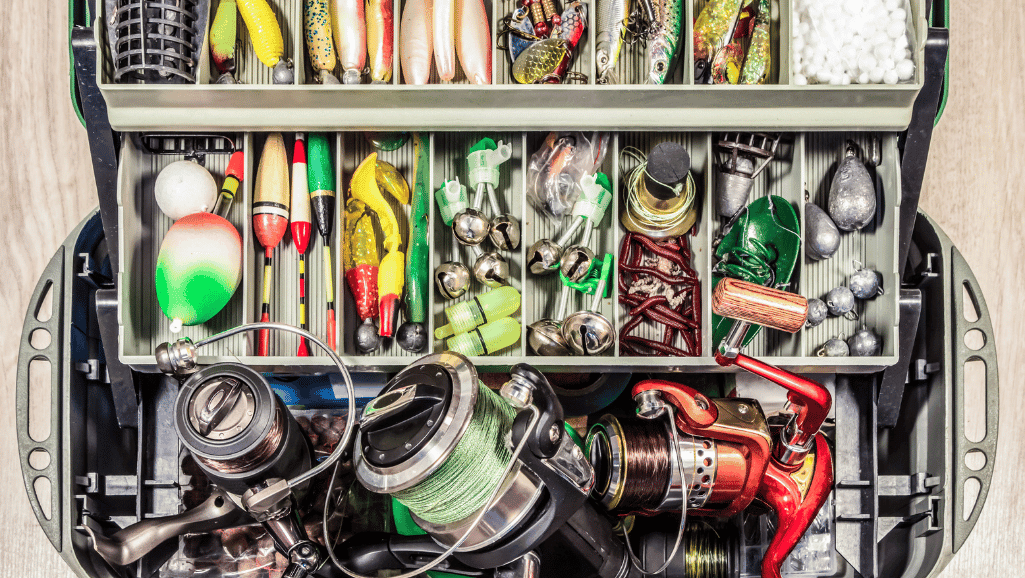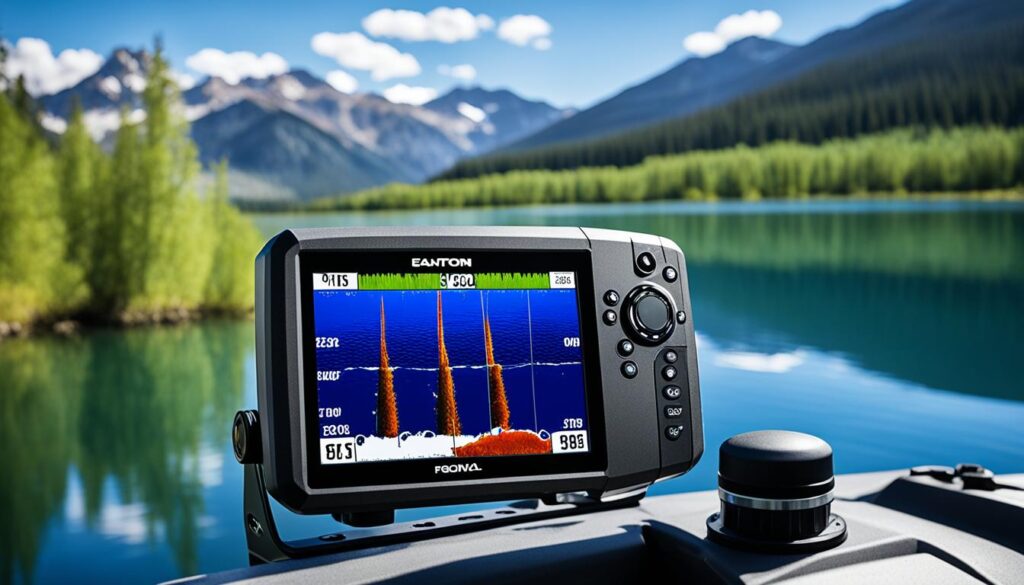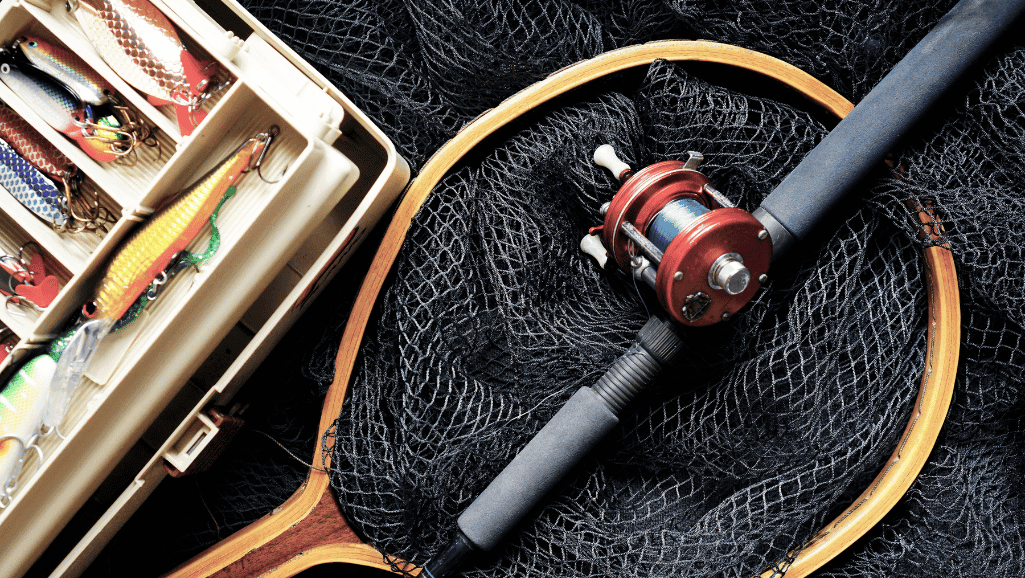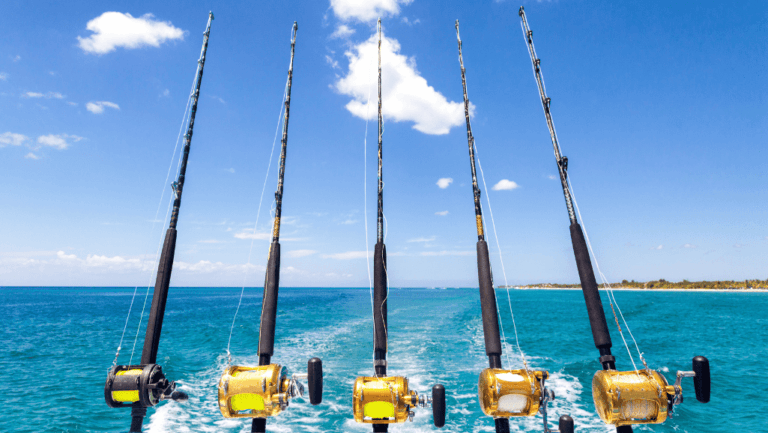As a seasoned angler, I know how crucial it is to pack the right gear for a successful fishing trip. Whether you’re fishing locally or going on a big adventure, the right gear makes all the difference. You’ll need fishing rods, reels, lures, lines, and more to make your trip a success.
Start by making a detailed list of what you’ll need. Include tackle like hooks, weights, and floats, as well as your fishing rods and reels. Don’t forget about smaller but vital items like fishing pliers, knives, and a tackle box to stay organized. If you’re with an outfitter or at a fishing lodge, they might give you a list for the specific fishery you’re in. These lists are a great place to start and cover the basics Must-Have Fishing Gear.
Think about the clothes and shoes you’ll need too. The weather and fishing type will dictate what you should bring. You might need waders, rain gear, or lightweight shirts. Polarized sunglasses are also a must for cutting down glare and spotting fish.
Other key items to pack include a fishing net, a first-aid kit, and a cooler for your catch. If you’re fishing from a boat, remember to bring safety gear like life jackets and a marine radio.
Key Takeaways
- Create a comprehensive packing list that includes essential fishing gear like rods, reels, lures, lines, and accessories.
- Don’t forget smaller but important items like fishing pliers, knives, and a tackle box for organization.
- Consider the clothing and footwear needed for the specific weather conditions and type of fishing.
- Pack additional items such as a fishing net, first-aid kit, and cooler for your catch.
- If fishing from a boat, bring necessary safety equipment like life jackets and a marine radio.
Fishing License and Regulations
Before you start fishing, make sure you have a state-issued fishing license. You must be over 16 to get one. Always check the rules for your fishing spot, like size limits and how to fish.
You can buy fishing licenses online, by phone, or at certain stores. They last a year from when you buy them. Some places let you renew automatically or buy licenses as gifts.
License prices might change over time because of things like inflation. But, some people like young ones, seniors, disabled vets, and active military might pay less or get free licenses.
Every state has its own fishing regulations. These rules cover things like catch limits and what bait you can use. Knowing these rules helps you fish responsibly and have fun. Breaking them can lead to fines.
A knowledgeable angler is a responsible angler. By understanding fishing licenses and rules, you help protect our waters and support fishing for the future.
Here’s a table showing how much fishing licenses cost in different states:
| State | License Type | Price |
|---|---|---|
| Alabama | Annual Freshwater | $13.85 |
| California | Annual Saltwater Fishing | $48.34 |
| Florida | Annual Saltwater | $17.00 |
| Idaho | Annual Fishing | $30.50 |
| New York | Annual Fishing | $25.00 |
License prices differ a lot by state. Always check with your local wildlife agency or their website for the latest on fishing licenses and rules. This way, you’ll be ready for your next fishing trip and can enjoy it more.
Choosing the Right Rod and Reel
Finding the perfect fishing rod and reel combo is key for a great fishing trip. You need to think about the type of fishing, the fish you want to catch, and your skill level. The right rod and reel combo will improve your casting, sensitivity, and performance.
Types of Fishing Rods
Fishing rods vary in length, action, and power to fit different fishing styles and techniques. Most rods for bass fishing are casting rods. Spinning rods are for special techniques and light lures. Rods for bass fishing are usually 6’6″ to 7′ long, with medium or medium-heavy actions for versatility.
Fast action rods are great for bass because they’re sensitive and set hooks well. Medium to medium-fast rods work well with treble hooks and lures like crankbaits and topwater lures. Rod power ratings, like heavy or medium-heavy, show the rod’s strength and lifting power.
For beginners, rods from 5 to 7 feet are good for better handling and accuracy in tight spaces. The best length is usually around 7 feet. Ultralight rods are for small baits and panfish, while heavy rods are for big fish.
| Rod Material | Characteristics | Best Use |
|---|---|---|
| Graphite | Lightweight, sensitive, prone to brittleness | Finesse fishing |
| Fiberglass | Durable, less sensitive than graphite | Heavy-duty applications, saltwater fishing |
| Composite | Combines advantages of graphite and other materials | Enhanced strength, sensitivity, and durability |
Selecting the Best Reel for Your Needs
When picking a fishing reel, think about the gear ratio, size, and drag system. Reels with a gear ratio of 7.1:1 or higher are good for fast action lures. Lower ratios, around 5.1:1, give beginners more time to react when a fish bites. Reel sizes should match the rod’s power and length. Ultralight rods pair well with 1000-2500 size reels, and bigger rods need 4000+ size reels.
A smooth drag system is key for controlling fish and preventing line breaks and hook losses.
For beginners, a complete fly fishing rod and reel combo is a good choice. It makes choosing easier and ensures a balanced setup. With the right rod and reel, you’ll be ready for any fishing challenge and increase your chances of success.
Essential Fishing Line and Leaders
Choosing the right fishing line is key for a great fishing trip. There are many materials and sizes to pick from, each with its own strengths and uses. Braided fishing line is strong and thin, great for long casts and deep water. Fluorocarbon line is almost invisible underwater and tough against abrasion, ideal for leaders. Mono-filament line is the top choice for many because it’s affordable, resists abrasion, and absorbs shock well.
For beginners, start with mono-filament fishing line, like Smooth Berkley Trilene XL Casting clear mono-filament in 10 lb test. It’s easy to handle and works well for many fishing situations. As you get more experience, try braided and fluorocarbon lines for different fishing techniques and conditions.
Make sure to match the line weight to your rod and reel for the best performance and to avoid line breakage. A good starting point is a fishing line with a six to twelve pound test strength. Practice tying knots with your line before you go fishing, as a good knot can be crucial for catching fish.
“Choosing the correct fishing line is just as important as selecting the right rod and reel. It can make or break your fishing experience.” – Expert Angler
| Fishing Line Type | Characteristics | Best Uses |
|---|---|---|
| Braided Fishing Line | Strong, thin diameter, sinks faster, casts farther | Deep water fishing, long casts, heavy cover |
| Fluorocarbon Fishing Line | Nearly invisible underwater, abrasion-resistant | Leader material, clear water, finesse fishing |
| Mono-filament Fishing Line | Affordable, abrasion-resistant, shock-absorbing | General purpose fishing, beginners |
Remember to bring extra spools of line on your fishing trip. Snags and break-offs can happen suddenly, and having backup line lets you fish without pause.
Hooks, Weights, and Floats
Essential fishing gear includes hooks, weights, and floats. These items are key for presenting your bait well and feeling fish bites. Let’s look at each part and see how to pick the best for your fishing style.
Types of Fishing Hooks
Fishing hooks vary in shape, size, and material for different fishing and fish species. Here are some common types:
- J-hooks: Great for many fishing situations.
- Circle hooks: Help prevent deep hooking and improve fish survival.
- Treble hooks: With three points, they’re often on lures for better hooking.
- Worm hooks: Perfect for soft plastic baits, with a wide gap and straight or bent shank.
When picking hooks, think about size, wire thickness, and material (like high-carbon steel or stainless steel). Beginners should avoid snelled hooks and choose any hook without a pre-tied leader.
Selecting the Right Weights
Fishing weights help you cast farther, reach deeper, and keep your bait steady in current or wind. Here are some common types:
| Weight Type | Description |
|---|---|
| Split Shot Sinkers | Great for many fishing methods, easy to add to your line. |
| Bullet Sinkers | Used in Texas-style rigs, pick them based on your fishing spot. |
| Drop Shot Sinkers | Popular with bass anglers for precise bait control. |
| Pyramid Sinkers | Often used in saltwater, now also in slow-moving freshwater. |
For beginners, start with a basic split shot weight. It’s affordable and simple to use. These weights go on your line to keep bait down and improve casting.
Choosing the Best Floats for Your Fishing Style
Floats, or bobbers, are key for beginners. They keep your bait at the right depth and show when a fish bites. Floats come in fixed and slip styles, from plastic, foam, cork, or wood.
Floats or bobbers are great for beginners. They sit on the water’s surface, moving up and down to signal a bite.
When picking a float, think about your fishing spot, the fish you’re after, and your bait’s weight. Adjustable floats like slip bobbers are good for changing depths and currents.
Knowing about fishing hooks, weights, and floats helps you choose the right gear. Match your tackle to your fishing method, target species, and local conditions for better success.
Must-Have Fishing Gear: Lures and Bait
Having the right lures and bait is key to fishing success. Whether you like live bait or artificial lures, there are many options. These can help you catch different fish species.
Live Bait Options
Live bait is a top choice for many anglers. It’s great for attracting fish. Nightcrawlers are a common live bait that works well for many fish.
Use a small hook (size 8 or 10) and add split shots 12-18 inches above it. This is good for catching panfish like bluegills and perch.
Shiners are another great live bait. They’re small baitfish that bass and other fish find irresistible. Keep them alive and healthy in a bait bucket or cooler.
Artificial Lures for Different Fishing Techniques
Many anglers enjoy using artificial lures for the challenge they offer. There are many types, each suited for different fishing methods and fish. Some popular ones include:
- Soft plastics: These lures are soft and come in various shapes and colors. They can mimic live bait in different ways.
- Spinnerbaits: These lures have a metal blade that spins, creating flash and vibration to attract fish.
- Topwater lures: Designed for fishing on the water’s surface, they make a disturbance that fish can’t ignore. The Whopper Plopper is a top choice for catching surface-feeding fish.
- Jigs: These lures have a weighted head and a soft skirt. They can be fished in many ways, including vertical jigging and casting. The Keitech swim shad with a 1/8-ounce ball jig head is great for bass.
Choosing the right artificial lure depends on the fish you’re after and the fishing conditions. Consider the water’s clarity, depth, and temperature to pick the best lure.
| Type of Bait/Lure | Best For | Recommended Products |
|---|---|---|
| Nightcrawlers | Panfish, trout, catfish | N/A (live bait) |
| Shiners | Bass, walleye, pike | N/A (live bait) |
| Soft Plastics | Bass, walleye, panfish | Berkley Gulp!, Zoom Bait |
| Spinnerbaits | Bass, pike, muskie | Strike King, Booyah |
| Topwater Lures | Bass, pike, muskie | Whopper Plopper, Heddon Spook |
| Jigs | Bass, walleye, panfish | Keitech Swing Impact, Z-Man ElaZtech |
Adding different fishing lures and bait to your tackle box gets you ready for any fishing trip. This increases your chances of success on the water.
Fish Finders and Fishing Electronics
Fishing electronics have evolved a lot, giving anglers many tools to improve their fishing. From basic 2D sonar to advanced technologies like Down Imaging and Side Imaging, these tools offer key info about the underwater world. They help find fish, spot structures, and map lake and river bottoms.
Wireless, castable fish finders are now popular, especially with beginners. These devices let anglers see what’s under the water without a boat. By tossing the device into the water, they can pinpoint the best fishing spots.
When picking a fish finder, think about your boat size, fishing type, budget, and gear compatibility. It’s also key to install, maintain, and calibrate these devices right for accurate results.
Imagine being able to see underwater and know fish are there. That’s what sonar gadgets can do for you.
New fishing electronics now use artificial intelligence to predict fish behavior and offer real-time info. For example, Minn Kota’s Spot-Lock changes boat control, letting anglers focus on fishing more.
High-end fishing gear can boost catch rates and improve fishing experiences, especially for serious anglers or those in tough conditions. Casual anglers might find basic fish finders enough.
| Brand | Model | Best For |
|---|---|---|
| Garmin | ECHOMAP with LiveScope Plus | Best Overall |
| Humminbird | SOLIX 10 CHIRP MEGA SI G3 | Best Side Imaging |
| Humminbird | Helix 7 CHIRP MEGA SI | Best Budget Option |
| Lowrance | Elite FS 7 | Best for Kayaks |
| Humminbird | Ice Helix 7 CHIRP GPS G4 All Season | Best Portable |
Keeping up with fishing electronics can help anglers make the most of their fishing time. Whether you choose a high-end fish finder or a basic sonar, investing in these tools can elevate your fishing skills.
Portable Solar Generators for Powering Your Fishing Gear
Going on a fishing trip means you need a reliable power source for your devices and appliances. Portable solar generators are changing the game for fishermen. They use the sun’s energy to keep your gear powered up. This means you can enjoy your fishing without the hassle of traditional power sources.
Benefits of Using a Solar Generator for Fishing
Adding a solar generator to your fishing gear has many perks:
- Eco-friendly: Solar generators use renewable energy, cutting down on your carbon footprint and environmental impact.
- Portable and lightweight: They’re easy to carry, making them perfect for fishing trips.
- Silent operation: Solar generators don’t make noise, so you can fish in peace.
- Versatile power output: They have many charging ports and power options for different fishing devices.
- Cost-effective: Using solar energy saves you money on fuel costs compared to traditional generators.
Recommended Solar Generator for Fishing Trips
For your fishing trips, the EcoFlow DELTA 2 is a top choice. It’s a cutting-edge portable solar generator designed for anglers:
- High storage capacity: It has a 1024Wh capacity, so it can power your gear for a long time.
- Powerful output: With a 1800W rated power output, it can support even the most demanding fishing electronics.
- Fast recharging: It can recharge in 5-8 hours with solar panels, keeping you ready for your next trip.
- Durable and reliable: It has a lithium iron phosphate (LFP) battery that lasts over 3000 charge cycles, offering long-lasting performance.
Here’s a table showing how long the EcoFlow DELTA 2 can power different fishing devices:
| Device | Power Consumption | Run Time with DELTA 2 |
|---|---|---|
| Phone | 11Wh | 89 times |
| Underwater Fishing Light | 40W | 17 hours |
| LED Searchlight | 60W | 16 hours |
| Fridge | 60W | 16-32 hours |
| Bilge Pump | 120W | 7 hours |
| Fishfinder | 300W | 3 hours |
| Trolling Motor | 720W | 0.9 hours |
| Electric Grill | 1150W | 0.7 hours |
The EcoFlow DELTA 2 solar generator is perfect for powering a fishfinder, charging your phone, or keeping your catch fresh with a fridge. It has a big storage capacity, charges quickly, and is built to last. It’s a great choice for any fishing lover wanting sustainable and reliable power.
Essential Fishing Tools and Accessories
Having the right fishing tools and accessories can make fishing more fun and successful. Items like pliers, knives, gaffs, and bait knives are must-haves for every angler. Let’s explore some key fishing tools and accessories.
Fishing Pliers and Multitools
A good pair of fishing pliers is crucial for any angler. The Piscifun Aluminum Fishing Pliers are made with aircraft-grade aluminum and have titanium-coated jaws. They can do many tasks, like removing hooks, cutting line, and even opening bottles.
Multitools are great for anglers who need a versatile tool. Look for ones with pliers, wire cutters, scissors, and other useful features.
Fishing Knives for Bait and Filleting
A sharp fishing knife is key for preparing bait and filleting fish. When picking a knife, think about the blade material, handle comfort, and durability.
The Bubba Blade Multi-Flex Interchangeable Blade System is perfect for those who want to switch blades easily. It lets you quickly change between bait and fillet knives.
Other important fishing tools and accessories include:
- Fishing gaffs for landing big fish
- Bait knives for cutting bait
- Hook removers for safely removing hooks
- Fish scalers for removing scales before filleting
- Fishing nets for landing and securing your catch
| Tool | Purpose | Recommendation |
|---|---|---|
| Fishing Pliers | Removing hooks, cutting line, general utility | Piscifun Aluminum Fishing Pliers |
| Fillet Knife | Filleting and preparing fish for cooking | Bubba Blade Multi-Flex Interchangeable Blade System |
| Bait Knife | Cutting and preparing bait | Rapala Fish ‘N Fillet Knife |
| Fishing Gaff | Landing larger fish | Protoco Stainless Steel Fishing Gaff |
A sharp knife is a fisherman’s best friend. It makes quick work of cleaning and filleting, and it’s an essential tool for any serious angler.
Investing in quality fishing tools and accessories prepares you for any situation on the water. Whether you’re cutting bait, filleting fish, or landing a big catch, the right tools can greatly improve your fishing success.
Fishing Apparel and Footwear
Getting ready for a fishing trip means picking the right clothes and shoes. Recent data shows a 15% rise in sales of hats with UV protection. This shows more anglers are protecting themselves from the sun. Most fishing outfits have three layers for comfort and performance. These layers include shirts made from polyester, nylon, merino wool, or a blend of polyester and cotton.
Nylon is top for fishing pants because it dries fast, is light, and waterproof. Fishermen like pants with lots of pockets and ones that turn into shorts. A survey found 80% of anglers wear long-sleeved shirts for UV protection and to stay warm.
For fishing shoes, there are many choices like sandals, booties, shoes, boots, and sneakers. Fishing sandals are now 20% more popular, showing a trend towards comfort.
Rubber-soled boots are best for grip and safety on slippery surfaces. Data shows waterproof boots are the top choice, making up 65% of all footwear sales. Hats, sunglasses, and gloves are key for protecting against the elements. A study found 70% of fishermen think fishing gloves are a must-have, highlighting the importance of protective gear.
| Fishing Apparel Item | Key Features |
|---|---|
| Baselayer Shirts | Moisture-wicking, quick-drying, made from polyester, nylon, merino wool, or polyester-cotton blend |
| Middle Layer Shirts | Made of nylon, providing sun protection and quick-drying properties |
| Fishing Pants | Nylon material, quick-drying, lightweight, waterproof, multiple pockets, convertible to shorts |
| Fishing Footwear | Sandals, booties, shoes, boots, sneakers, rubber soles for traction and slip protection |
| Fishing Accessories | Hats with UV protection, sunglasses, fishing gloves |
For shore fishing, breathable shorts and shirts are key for staying warm in cold waters. Chest and waist waders are essential for comfort. Wading boots with rubber soles protect against sharp objects. Fishing vests are great for storing gear with many pockets. Layering is crucial for staying comfortable in different weather. Wool or polypropylene shirts are good for the base layer, and wool sweaters or fleece add warmth.
“Investing in the right fishing apparel and footwear not only enhances comfort and protection but also greatly improves the overall fishing experience.”
With many fishing apparel options, anglers can pick the best gear for their needs. This ensures a successful and fun fishing trip.
Conclusion
Starting a fishing trip needs careful planning and the right must-have fishing gear. Choosing the right rod and reel combo is key, along with the best fishing line for your needs. Monofilament lines are easy to handle and secure, great for beginners in saltwater fishing.
J-hooks in sizes from 1/0 to 3/0 are versatile for many fishing methods. Circle hooks are best for catch-and-release fishing because they’re kind to fish’s mouths.
Lures and baits are crucial for any fisher’s gear. Soft plastic lures, 3-5 inches long, are great for beginners. A small to medium tackle box is perfect for storing your must-have fishing gear, like rods, reels, lines, lures, and hooks.
For saltwater fishing, beginners should pick a 6-7 foot rod for 10-20 pound lines. Fiberglass rods are strong and flexible.
More than basic fishing tools, having fishing pliers, multitools, and knives for cutting bait and filleting can make fishing better. Always check local fishing laws and get the right fishing license before you go. With the right gear and knowledge, you’ll have a great time fishing and making lasting memories.
